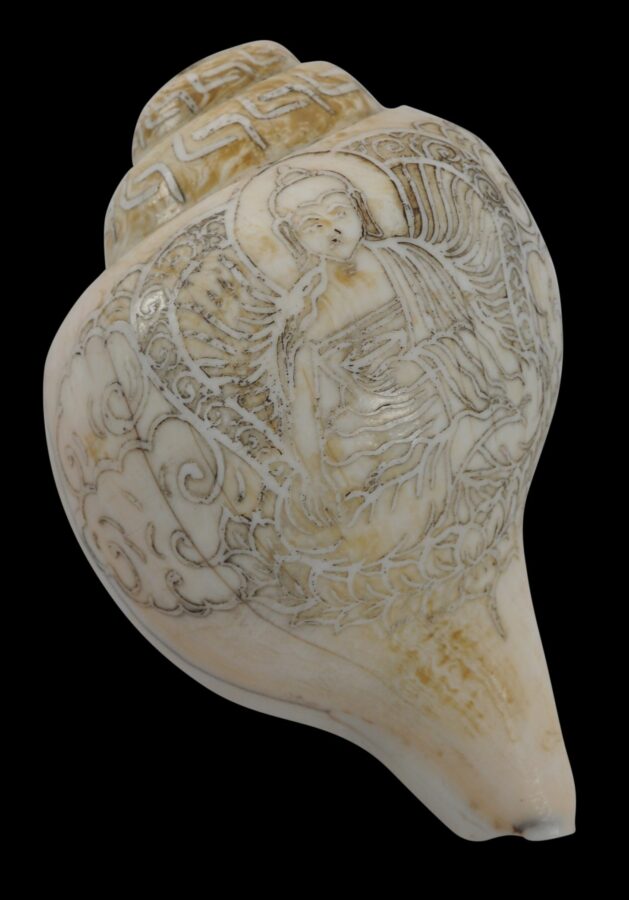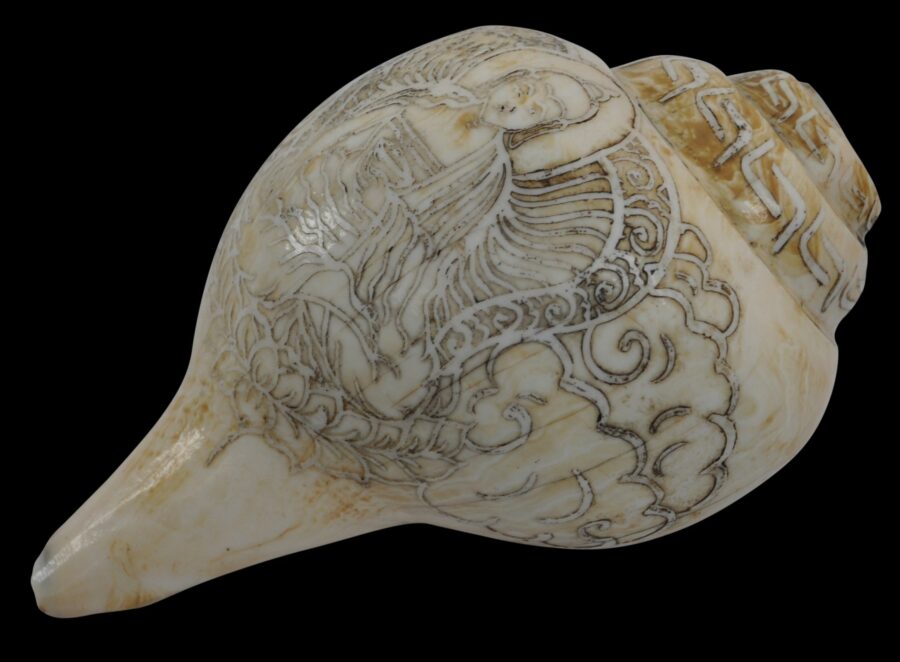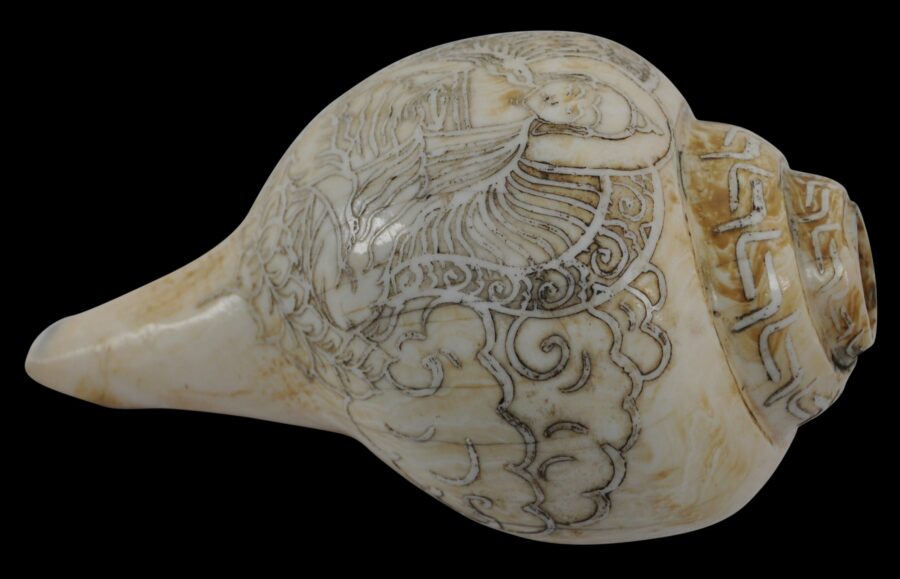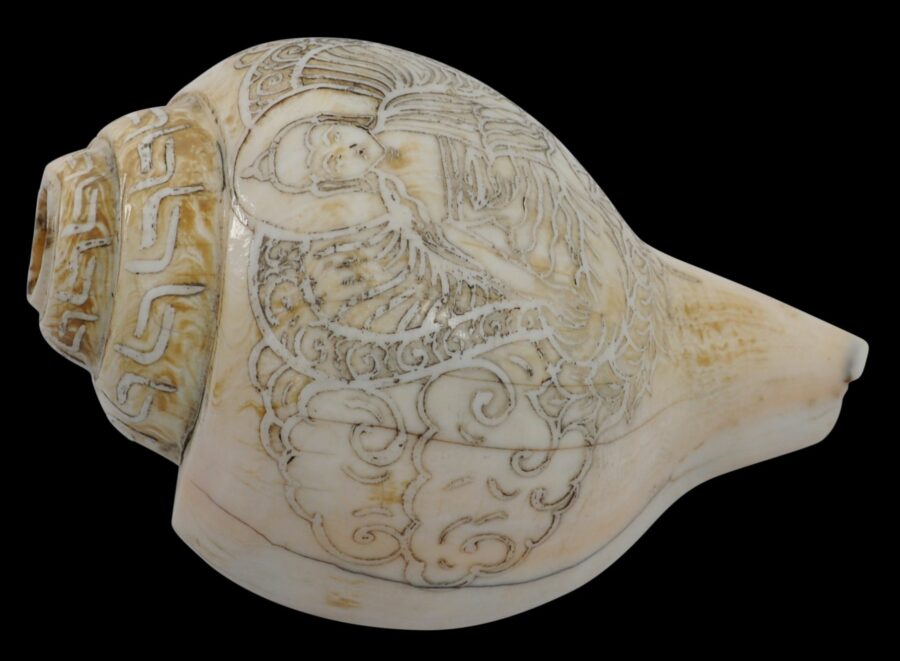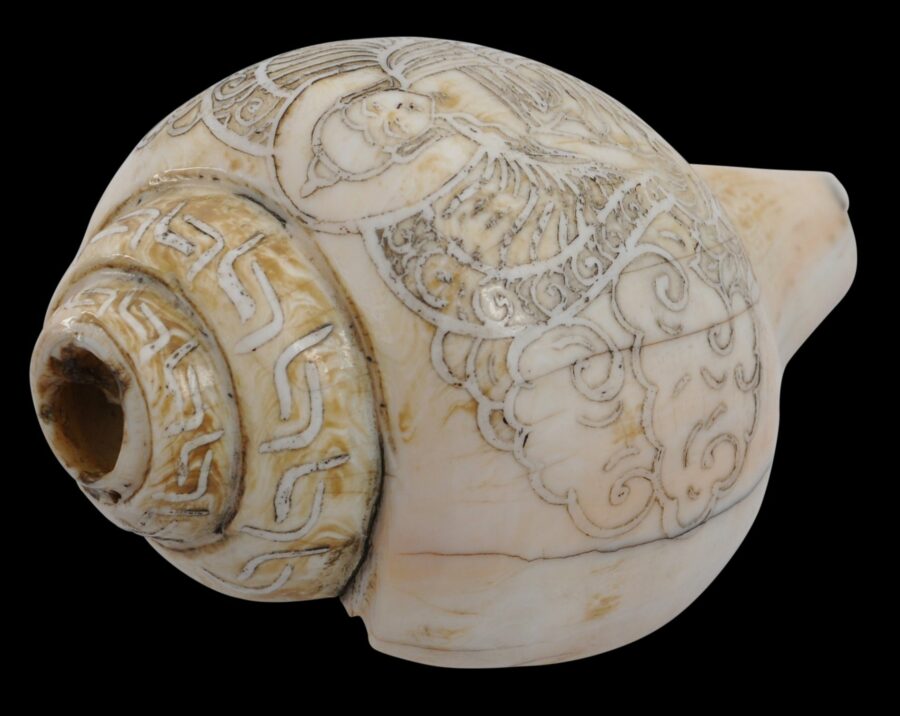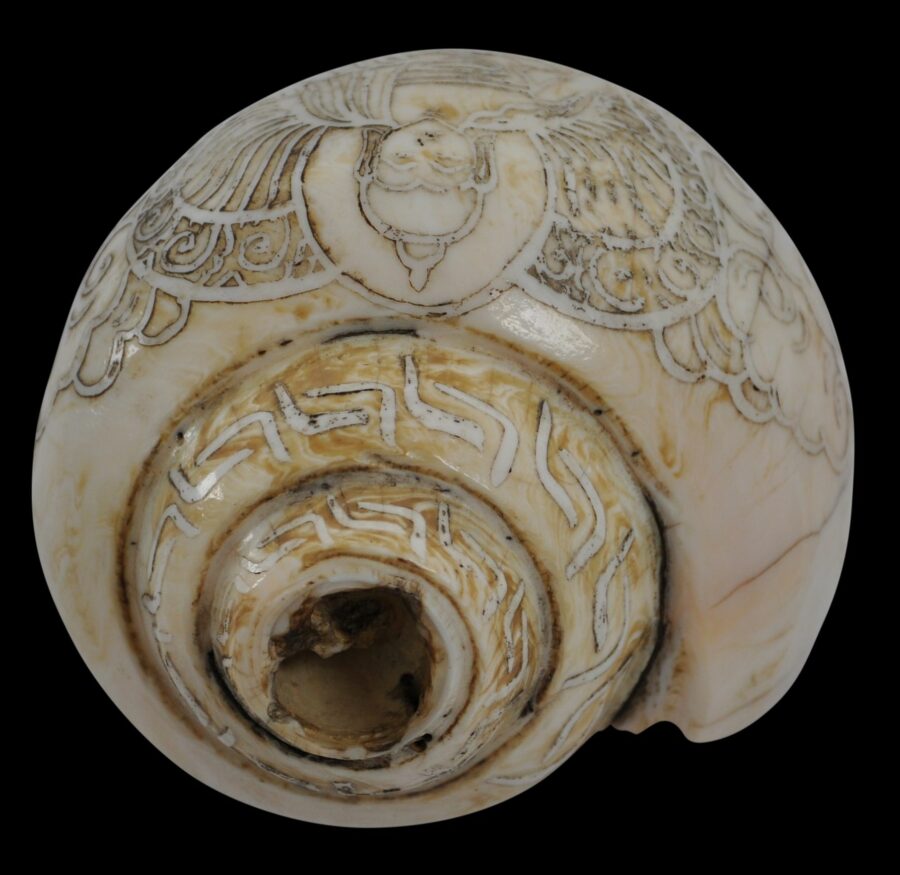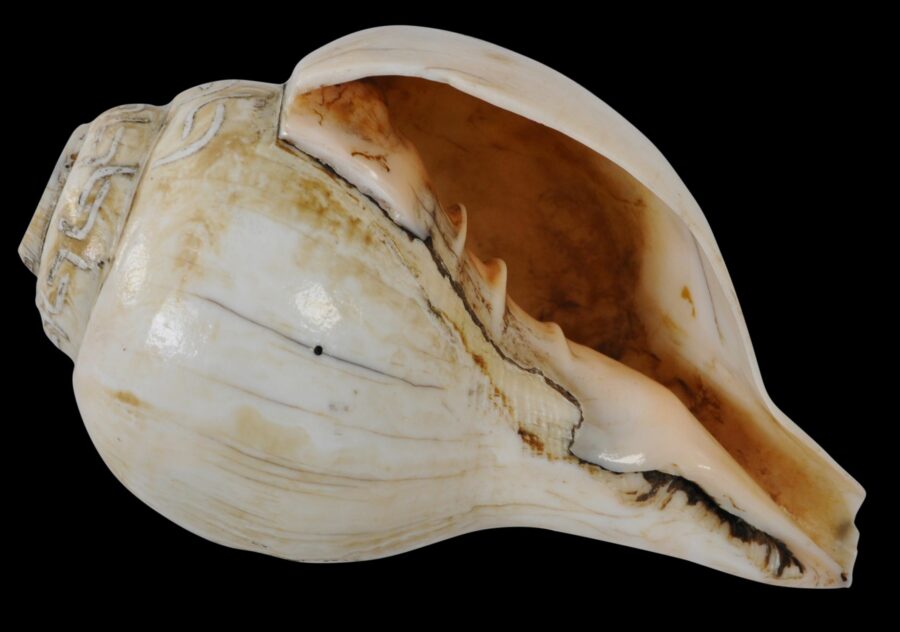This shell trumpet has been carved extensively with a central figure of the Buddha sitting cross-legged, and holding his right hand downward in the earth-touching gesture (bhumisparsha mudra). The Buddha is seated on a lotus cushion, amid swirling cloud-flame motifs.
Such instruments usually are referred to as conch trumpets but the shells used are not conch shells but chank shells (Turbinella pyrum).
The shell has been converted into a trumpet or horn with the removal of the end of the point to provide a blowing hole.
The carving has been worn smooth from handling and ritual use. The patina and age are clear.
Such shells are important ritual objects in Tibetan Buddhism. They are used as ceremonial trumpets in prayer rituals, to summon monks to prayer, to summon spirits as well, and to invoke rain and water (Reynolds, 1978, p. 80.) Shanghai Museum (2001, p. 136) illustrates a conch shell trumpet carved with eight small Buddhas which is said to have been a gift from the Qianlong Emperor to the Dalai Lama.
Overall, this is fine piece with excellent patina.
References
Lama, M.N. Ritual Objects & Deities: An Iconography on Buddhism & Hinduism, Lama Art, 2003.
Reynolds, V., Tibet: A Lost World: The Newark Museum Collection of Tibetan Art and Ethnology, The American Federation of Arts, 1978.
Shanghai Museum, Treasures from Snow Mountains: Gems of Tibetan Cultural Relics, Shanghai Museum, 2001.


